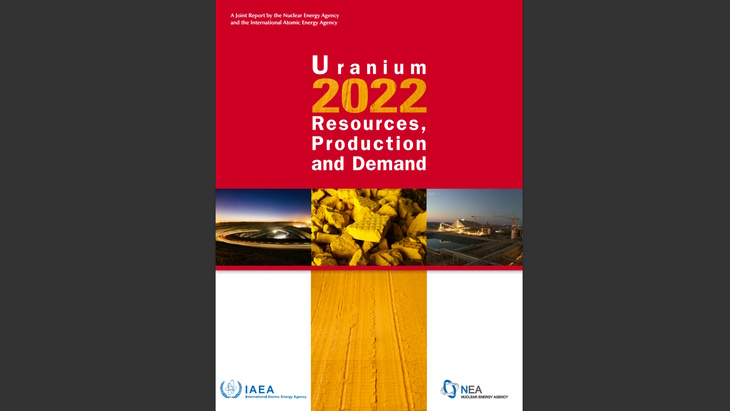Red Book provides 'snapshot' of uranium situation
04 April 2023
The 29th edition of the OECD Nuclear Energy Agency (NEA) and International Atomic Energy Agency's jointly produced reference work on uranium provides analyses and information from 54 uranium producing and consuming countries and provides a 'snapshot' of the situation from data available in early 2021.

Uranium 2022: Resources, Production and Demand - known as the Red Book - presents data on global uranium exploration, resources, production and reactor-related requirements, as well as projections of nuclear generating capacity and reactor-related requirements up to 2040.
The report covers a data reporting period from 1 January 2019 to 1 January 2021, although some relevant information for 2021 and 2022 is also included in the discussions, the NEA noted. It is usually published every two years: the 28th edition appeared in December 2020.
Overall, global uranium resources decreased "modestly" in the reporting period, the report found, in contrast to slight increases seen in previous recent editions of the Red Book, primarily due to mining depletion and cost category re-assignments of resources in Kazakhstan and Canada. Changes in cut-off grades, updated recoverability information, currency inflation effects and re-evaluations of previously identified uranium resources - in these and other countries - also contributed. Worldwide expenditures on domestic exploration and mine development decreased to approximately USD250 million in 2020, continuing a downwards trend that has been seen for several years.
The report cautions that the uranium resource figures presented are a "snapshot" of the situation as of 1 January 2021, reported mainly from official government sources, and that readers "should keep in mind that resource figures are dynamic and related to commodity prices."
World nuclear capacity expected to rise "for the foreseeable future" and sufficient uranium resources exist to support continued use of nuclear power and significant growth in nuclear capacity for electricity generation and other uses in the near to long term.
"In 2021 and 2022, the perception of nuclear energy as a strategic resource for energy independence has started to change in many countries, as reflected by recent government nuclear energy policy changes," the report concludes. "Noting that this was also due to the dramatic European energy crisis of 2022 brought by the shifting geopolitical situation, the 2024 edition of the Red Book will aim to provide a fuller picture of the implications of these developments on uranium demand and supply.
"After a period of reductions in uranium production, slowed investment and comparatively low prices, it remains to be seen whether the quickly evolving market and policy environment will provide incentives for the uranium market to expand substantially in the coming decades."
Researched and written by World Nuclear News
No comments:
Post a Comment